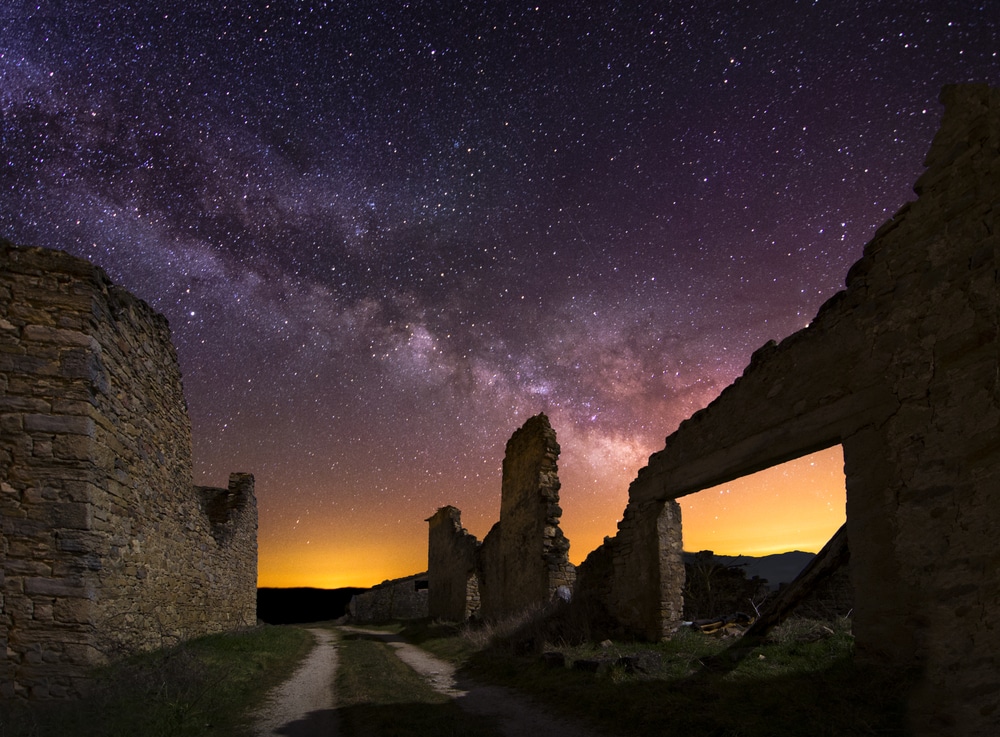No one knows what the first person who ever looked at the stars thought about the miracle of the night sky. What we do know is that the world of astrophotography has a definite starting date and that it continues to be a passion for amateur and professional photographers alike.
The first image of the moon was made in 1840 on a sheet of silver-plated copper called a daguerreotype. An image of the star Vega came a decade later. The world of astrophotography has been with us ever since. So, what is the best Nikon lens for astrophotography? Let’s take a look.
Here Are the Top 5 Nikon Lenses For Astrophotography!
- Nikon NIKKOR Z 20mm f/1.8 S Lens (Best Ultra-wide in Low Light)
- Nikon AF-S Nikkor 50mm f/1.8G Lens (Best Budget and Easiest to use)
- Nikon AF-S DX NIKKOR 35mm f/1.8G Lens (Best Nikon Wide-Angle Lens for Astrophotography)
- Nikon AF S NIKKOR 85mm f/1.8G Fixed Lens (Best Nikon Medium-Length Telephoto)
- Nikon AF FX NIKKOR 35mm f/1.4G Lens (Fastest Nikon Lens for Astrophotography)
What to look for in lens for astrophotography
The lens you use is one of the biggest factors in getting clear images of comets, planets, stars, and the moon with your Nikon camera. I shoot with a 70-300mm zoom, and an 85mm and 50mm prime, but the question what is the best type of lens for astrophotography?
A common misconception is that a zoom lens will work better for photographing the night sky than a fixed or “prime” lens. It’s true that a zoom lens works better for wildlife, or capturing outdoor sports activities, but aside from shots of the moon, where my 70-300mm zoom lens brings in clear crisp images, I’ve had much better success with my prime 85mm and 50mm lenses. The 50mm, with a 1.8 F-stop, in particular works well on moonless nights capturing stars.
One of my favorite fringe Astro photographic hobbies is capturing lightning strikes. I have images of Wyoming daytime and nighttime lightning strikes, but the ones taken with my 50mm are superior in contrast, brightness, and overall quality.
Check out the 5 Best Nikon Lenses for Astrophotography before you make your next lens purchase!
NIKON NIKKOR Z 20mm f/1.8 S Lens
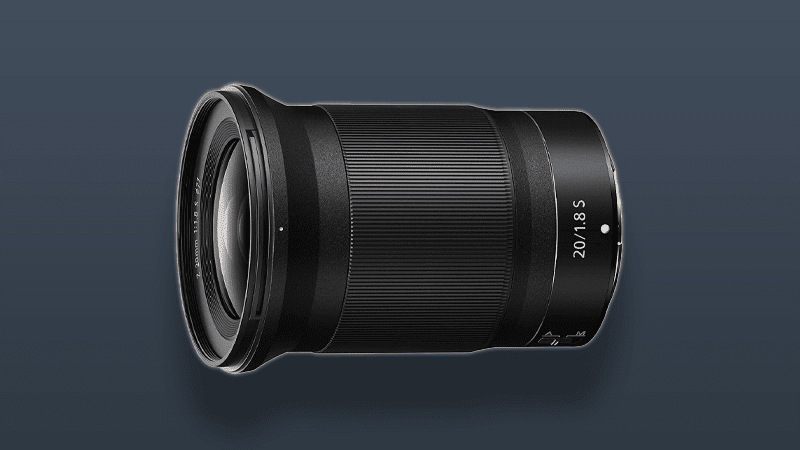
Best Ultra-wide Angle Fast Prime in Low Light for Nikon Z Mirrorless Cameras
Bottom Line:
This is the best Nikon lens for astrophotography in a mirrorless camera. The image quality is unsurpassed in low light or in areas of contrasting dark and light backgrounds. Shooting from shadow into brighter areas can create dramatic contrasting effects. The fast F/1.8 combined with the 20mm length is a warhorse for bringing in clear images of the night sky. It’s not a lens you’d often use for portraits, but it will do the job of capturing constellations, planets, and images of the rising moon against a mountain or desert backdrop.
With higher costs usually associated with Nikon lenses, the best Nikkor lenses for astrophotography can usually save you money as this one does.
PROS
- Nikon Z Mount
- Minimum focus distance of 8 inches
- Multi-focusing system for fast, accurate autofocusing
- ED glass elements and Nano Crystal Coat
- One of the best Nikon Z lenses for astrophotography
CONS
- Expensive
- Non-traditional manual focus
Why We Picked It
In looking for the best Nikon prime lens for astrophotography, the Z 20mm ranks high.
The Z 20mm F/1.8 is one of the best Nikon lenses for star photography. This lens allows the average photographer to produce professional-quality results in a variety of light conditions. For images of the night sky, it competes well with higher-priced rivals, but in mixed conditions of light and dark, it might be the best lens for mirrorless Nikon cameras on the market.
In comparing the best Nikon Z lens for astrophotography, the fast F/1.8 draws in light in complete darkness well when combined with the 20mm length. The strength of this lens comes in twilight and the pre-dawn morning when most lenses can’t compensate for the varying levels of light on the horizon when mixed with the dark sky overhead.
Another powerful feature of this lens is the ability to create dramatic effects from close objects, such as boulders, or wildlife against the distant sky. I’ve worked with settings to get just the right adjustment to capture mule deer feeding in the early morning against a rising moon and always had depth-of-field problems in getting both in focus. This lens addresses those issues for you, making this type of photography much easier to master.
This is a lens with variability that will augment any photographer’s ability to shoot the sky at various light levels no matter their skill level.
We consider this the best Nikon Z mount lens for astrophotography that remains in the price range for most photographers.
Who It’s For
Amateurs and professionals alike will enjoy the quality of this lens, and the variety of settings it can be used in. It is not a one-size-fits-all lens for wide-range photography, but it is a quality lens for its intended purpose of gathering light in dark settings.
Someone who is looking for the best Nikon mirrorless lens for astrophotography should consider this lens. With a little experimentation, the novice can achieve quality usually reserved for veteran photographers. If you’re someone who enjoys shooting at unique angles, with contrasting foregrounds against dark background settings, this lens will do the job for you.
You won’t use this lens in a studio setting, but it has benefits in daylight as well as the darkest night.
Nikon AF-S Nikkor 50mm f/1.8G Lens
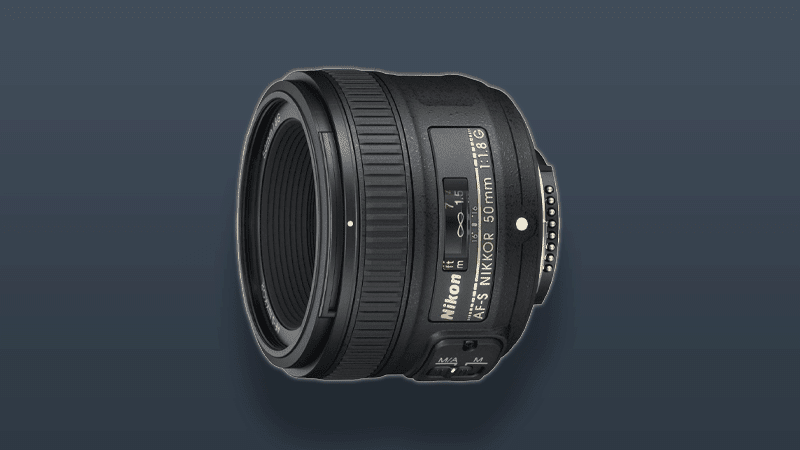
Best Budget and Easiest to use
Bottom Line:
If you’ve purchased a Nikon camera package, you probably already have this lens. The 50mm Nikkor is the standard lens in every offering by Nikon in their consumer line of DSLR cameras.
This is the workhorse lens that most of us used to learn our first lessons in photography. Its virtues are simplicity, ease of focus, and that generous 1.8 F-stop.
This lens will gather light from the night sky with ease. Focus it manually, lock it in place and open the shutter. The quality you can achieve is remarkable with this basic piece of Nikon engineering, making it the best Nikon lens for star photography you can buy for just a couple of hundred dollars.
One of the first mistakes aspiring photographers make when pointing their cameras to the sky is the idea that a longer lens creates better images of stars, planets, and the moon. Aside from lunar photography, unless you’ve attached your camera to a telescope, you’re not going to get close-up images of the phases of Venus or the rings of Saturn.
But, you can get great images of the vastness of the night sky, and the contrast you can bring into focus with terrestrial objects in the same frame isn’t bad either.
PROS
- Easy to use
- Minimum focus distance of 16 inches
- Inexpensive
- Multi-use, but great for astrophotography
- Optimized for edge-to-edge sharpness on both FX and DX SLRs
CONS
- Limited 50mm length
- No zoom
- Focal length changes with DX cameras
Why We Picked It
Photography, especially astrophotography shouldn’t be an inexpensive hobby, with this lens, it doesn’t have to be, this is an affordable option for just about everyone. The universal offering of this 50mm lens makes it readily available for most amateur photographers and is easy to replace if the lens is damaged or loses functionality.
With the financial reasons for picking this lens given, the functional value of the lens is the major reason it is considered the best Nikon FX lens for astrophotography at a reasonable price.
The lightweight, just 6.5 ounces, and the small footprint, (2 x 2.8 x 2.8 inches) make this a lens that is easy to carry in a backpack, and that stores easily in luggage when traveling.
While the size is small, the performance isn’t. This lens is a classic case of “less is more” when it comes to photographing the night sky. That’s why we consider it possibly the best Nikon F mount lens for astrophotography available at a reasonable price on the market.
Who It’s For
Without saying, “one size fits all,” this is a one-size fits all lens. The versatility of the 50mm lens is why it is packaged with Nikon’s FX series consumer-level products. Consumer level doesn’t equate to low quality. This lens will work for the first-time user and perform magic in the hands of a professional.
This is a lens that everyone should have in their camera bag. Portable, easy to use, and best of all it produces excellent images in limited light.
Nikon AF-S DX NIKKOR 35mm f/1.8G Lens
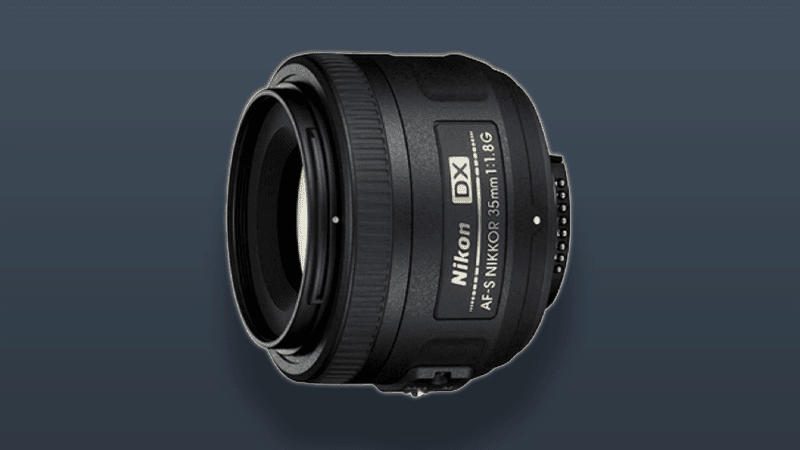
Best Nikon wide-angle lens for astrophotography
Bottom Line:
At just 35mm this is as wide an angle lens as we’ll have in this review. The smaller the number, the wider the angle. The standard “nifty fifty” as the 50mm Nikon lens is often called, is great for portraits and does a good job in limited wide-angle sky shots, but if you want the full panorama of the heavens in a horizon-to-horizon shot, the shorter 35mm lens is the one you want to snap onto your DX body.
This lens offers a double whammy, it is in the list of the best Nikon Dx lens for astrophotography, and it sits near the top in low-cost lenses as well. It’s not cheap, far from it, but it is inexpensive, and there is a difference.
PROS
- Easy to use
- Inexpensive
- Widest angle
- Designed for DX SLRs
CONS
- Limited 35mm length
- No zoom
- Doesn’t function as well with FX cameras
Why We Picked It
Novices always jump for the longer lens, those zoom lenses that extend to 300mm, 500mm, or longer. That’s great for wildlife photography and outdoor sports, but they can’t open up enough to capture the massive vistas of the night sky.
The 35mm lens on this camera is the shortest available for Nikon cameras at an affordable price. The 1.8 F-stop absorbs light well, in an even pattern thanks to the curvature of the lens. When shooting stars at night, the biggest problem most people face is light pollution from the surrounding areas. City lights, beckons, and headlights from distant cars and trucks can ruin an otherwise fabulous setting.
The portability of this lens, at just seven ounces, makes it easy to pack into isolated areas where light pollution isn’t a problem. With an F-stop range from 1.8mm to 22mm, and manual override you can set your camera securely, open the shutter and take long timed shots of the night sky. Some of the most impressive “wheeled” style images of the night sky were taken with a 35mm Nikon lens.
The photographer locked the camera rigidly in place, focused on Polaris, and let the spinning of the earth create the swirled images of the night sky in motion.
Who It’s For
This is a lens for everyone. It is practical, with autofocus, and manual override. The fixed 35mm focal length pops into focus almost instantly in auto mode and is easy to adjust in manual, and perhaps more importantly, stays where you put it. It is not prone to sliding in and out of manual focus as some larger telephote lenses are known to do.
Novices and professionals alike can get outstanding shots of the night sky with this wide-angle beauty.
Nikon AF S NIKKOR 85mm f/1.8G Lens
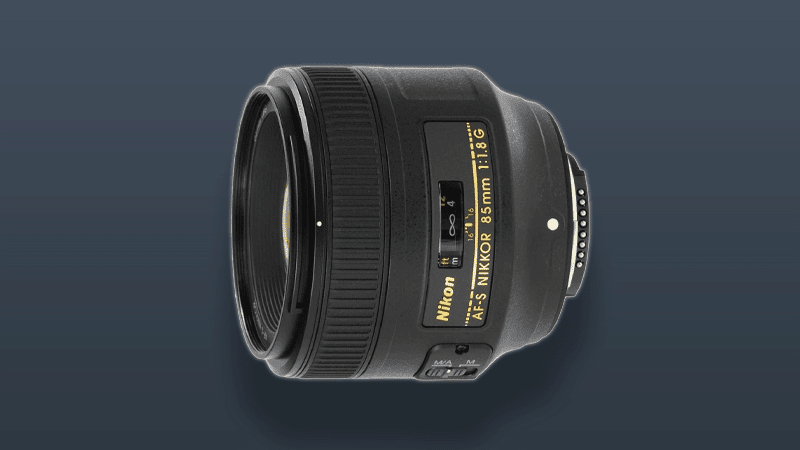
Best Nikon medium-length telephoto
Bottom Line:
So far we’ve sung the praises of the short-length, fixed lens, but there are times when a telephoto lens is a great option. An 85mm telephoto lens can produce some spectacular images but they come with a severe caveat. Their field of view is too tight for long exposures. An 85mm lens can only remain open for about 4.5 seconds before the rotation of the earth moves enough to blur your image. The shorter the lens, the longer the exposure time you have, conversely, as lenses extend to 200, 300, 400mm and beyond, your exposure time gets brief (the 500 rule for astrophotography).
The answer is a star tracker with a telephoto lens.
The 85mm lens attached to a properly calibrated star tracker can produce incredible images, the style you’d assume came from an observatory. This 85mm lens, when properly mounting can do that type of work, that’s why we consider it the best Nikon telephoto lens for astrophotography.
PROS
- Moderate price
- Fast aperture
- Easy to use
- 7 diaphragm blades
CONS
- Fixed 85mm length
- Can have chromatic aberration issues with fine images
- Tighter field of view
Why We Picked It
Many casual amateur photographers confuse telephoto with zoom. You can have zoom telephoto lenses, they are more popular than fixed telephoto, but they’re not the same thing. As the name implies a telephoto lens has elements of a telescope integrated into the photographic lens, in other words, it magnifies the image.
The closest approximation of the human eye in a lens is around 50mm. That’s why old-style 35mm film cameras were often set with a fixed 35mm lens, and it’s why the 50mm is considered the most versatile lens a photographer can use.
The benefit of a medium telephoto lens like this one in 85mm, is that it magnifies the image just enough to bring in detail that the human eye cannot. When it comes to astrophotography, our eyes can adjust only so much as our night vision reaches its full potential. An 85mm lens goes beyond our ability to capture light in conjunction with the camera’s ability to take in as much or as little light as we allow via the shutter speed, ISO, and the F-stop.
This 85mm lens has tremendous potential with its fast 1.8 f/stop settings.
For tighter images, set against a specific backdrop, the 85mm range is outstanding.
I have a 70-200mm zoom that I take with me each morning as I irrigate and check livestock on our farm. Many times, I’ve used it set at 85mm to capture deer, fox, or coyotes silhouetted against the glow of the rising or setting sun, that’s the power of a lens in the 85mm range.
Who It’s For
This lens is for the more advanced user. A novice can get quality images using it, but with a fixed focal length of 85mm, you can’t compensate for position and angle by zooming in or out. It takes a seasoned photographer to know just where to sit, where to aim, and how to frame the image they’re trying to capture. In the night sky, those management skills are paramount, and often must be done in almost total darkness. You don’t have to be a pro to benefit from this lens, but you need to be a student of the art to get the best results.
Nikon AF FX NIKKOR 35mm f/1.4G Lens
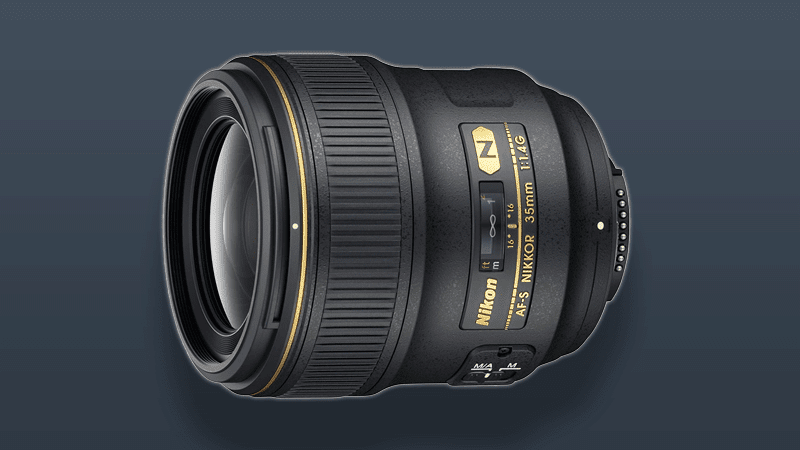
Fastest lens with 1.4 f/stop
Bottom Line:
It’s often all about speed when it comes to photography, but the terminology can be misleading. When someone mentions shutter speed, that’s a camera function, when they speak of a fast lens, that’s a metric individual to the specific lens and is measured in F-stop.
This lens is the fastest in our list with a blazing F-stop of 1.4. That’s going to grab a lot of images clearly in dim light. When it comes to determining what lenses are good for astrophotography, one with an F-stop this fast has to be in the conversation.
This is an expensive lens, the most expensive on our list. Old-time photographers often determined the quality of a lens by its weight, if that’s the metric you choose, this is a good one, tipping the scales at a hefty 1.32 pounds.
The wide angle (35mm) combined with the 1.4 F-stop makes this camera a beast for gathering in light during long night exposures.
PROS
- Fast 1.4 F-stop
- Quality design
- 12-inch minimum focus
- 9 blade diaphragm
CONS
- Expensive
- Heavy 1.32 pounds
Why We Picked It
You don’t win the Kentucky Derby with a plow horse goes the old adage that sometimes you need a specific tool to do a specific job. The tool in this case is a lens that can grab light faster than any other in this review. An F-stop of 1.4 in a DSLR camera is rare, representing just a fraction of the huge market in lenses that are available today.
The weight of the lens can be a deterrent for some photographers, but the enhanced diaphragm and additional glass layers required to create a lens with these capabilities are going to add a few ounces to the overall package.
You’ll be able to capture some night images with handheld shots, not requiring a rigid mount or star tracker.
When you do stabilize the camera, or add a star tracker, the images you’ll get will outdistance the competition when it comes to wide, panoramic images of the night sky
The Nikkor 35mm f/1.4 represents an updated design on one of Nikkor’s most popular lenses. It combines the wide angle capabilities of a 35mm perspective with the fastest F-stop you’re likely to be able to afford on the consumer market. This is already a high-priced lens at F-1.4.
The speed and the 35mm length, make this the best Nikon wide-angle lens for astrophotography.
Who It’s For
The benefits of this combination of angle and speed in astrophotography are limitless for photographers of all skill levels.
An additional benefit of a fast lens like this one is the ability to shoot video from your Nikon camera at night.
Often photographers are frustrated with the limited ability to capture video with a slower lens. Taking video with this lens is much easier to do. Capturing meteor showers or flocks of geese passing overhead with the stars as a backdrop are some of the things enterprising photographers have been able to do with this lens.
Conclusion
There are many hundreds of lenses out there for Nikon cameras. Some of the best Nikon fit lenses for astrophotography are made by Sigma and Vivitar, but we prefer Nikon and Nikkor lenses for their quality and compatibility with Nikon cameras.

The lens you choose should fit the style of astrophotography you indeed to pursue. Wide-angle, panoramic vistas require a shorter 20 to 35mm lens. Long exposures with a star tracking to bring in planetary detail, and close images of comets and nebula require longer lenses, with the 85mm being among the best.
Your budget and your intentions should drive your choice.

